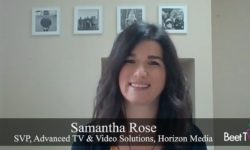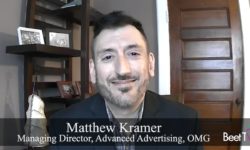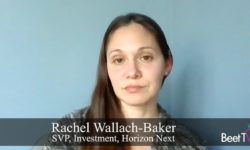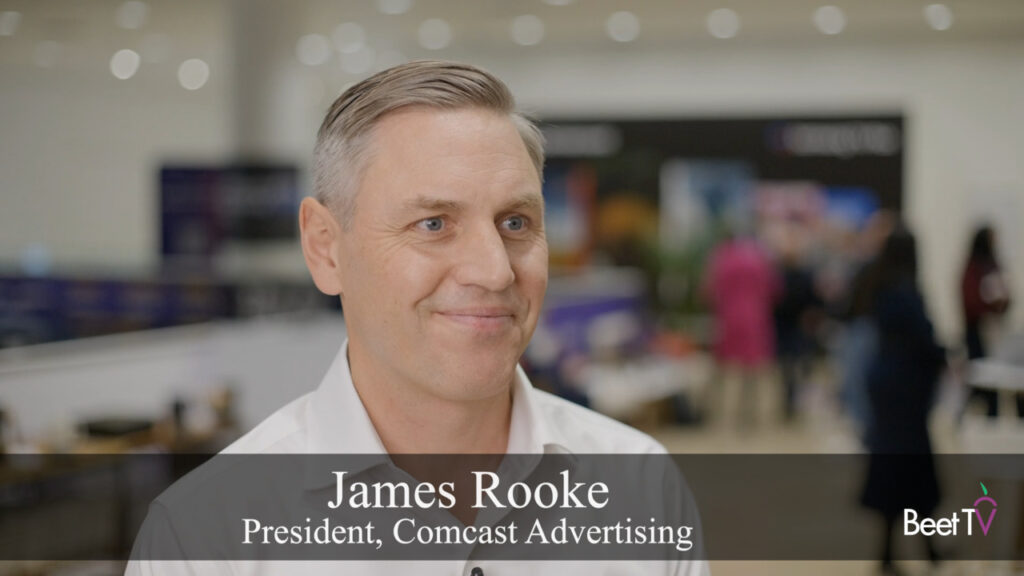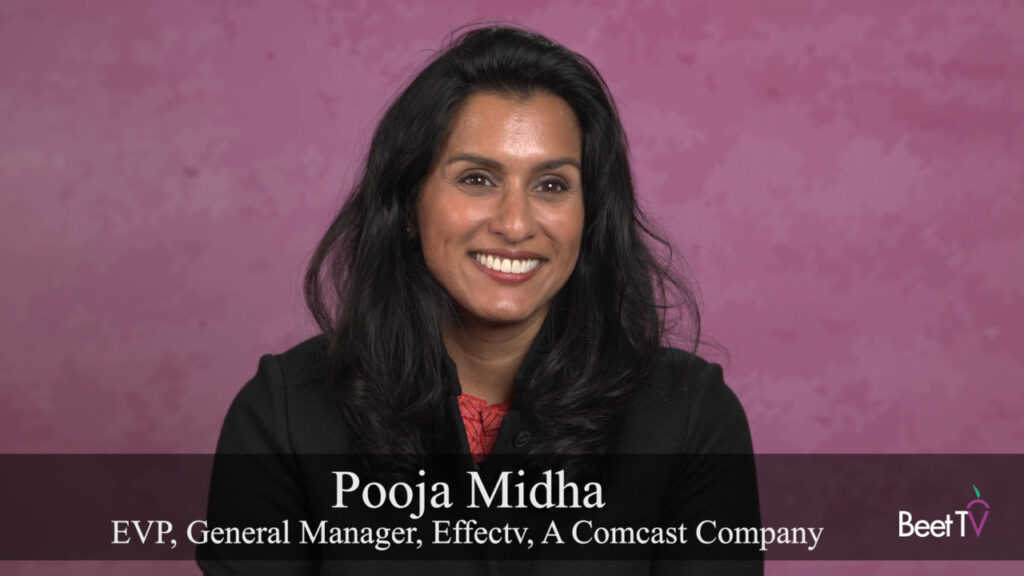If 2020 was the year when our foundation was shaken and reset, 2021 may be the year when substantive new growth can occur on top.
That is to say, many trends which marketers got interested in last year and now ready to be adopted in earnest in the year ahead.
In this video interview with Beet.TV, Julie Anson, Director, Strategic Investment, Advanced TV, at the ad agency Magna Global, says interest in targeted TV ad buying is ready to flourish fully in 2021.
“I think we’re going to see a combination of all of it,” she says. “More of a shift into nonlinear CTV streaming environments, more use of platforms and technology to make it feel more programmatic, and ‘audience’ (is) going to continue to be the hot buzzword for 2021.
“2020 was a year where people were really interested in moving away from traditional demo(graphic targeting), and more into audiences, and trying new technologies and innovation. So I’m really hopeful and excited that 2021 is going to be the year we do it.”
Forecast growth
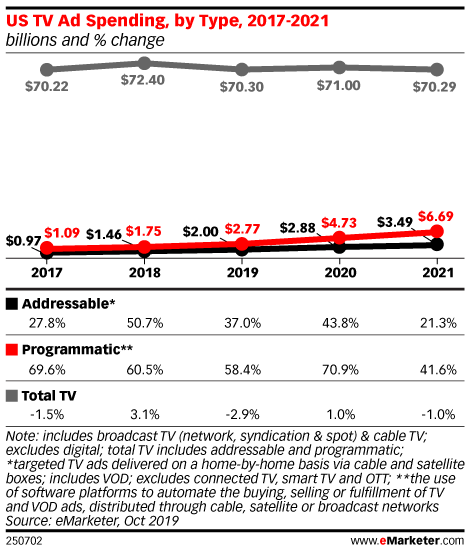
EMarketer last year estimated programmatic TV ad spending will reach $6.69 billion in the US by 2021, more than doubling from $2.77 billion. That makes it a still-small but fast-growing part of the overall TV ad spending pie.
Ad buyers are getting interested by the ability to target specific audiences or households, the ability to use other data in doing so and the ability.
Going nationwide
Anson is interested in how addressable TV is emerging out of local cable operators’ domain and on to the national scene.
“I think national addressable is a really exciting possibility,” she says.
“In traditional local and addressable, I think everyone’s pretty set; they know what it is, they either do it, they don’t do it, they feel they’re a client that it applies to. I think national addressable is just going to change that.
“I think national addressable is something all clients can be a part of, not only the ones with a really hyper-focused target, and a niche consumer base. I think, even for creative versioning, take a national ad that you bought in the upfront anyway, and do creative versioning to different targets, something really simple, that isn’t so hyper-precise. I think there’s room for a lot of clients who haven’t done traditional linear, to start to play with it.”
Business bottlenecks
But the transition won’t be all plain sailing. Anson thinks bottlenecks remain that inhibit the pace of roll-out for addressable TV.
For once, they aren’t strictly technical, however. Rather, she sees challenges in simply educating advertisers and in ensuring that the old business can adapt to the new way of doing things.
“It’s not there yet, I’ll be frank,” she says.
“As buyers and sellers, we actually have to come to the table and figure out what the business terms look like – how does it fit into the larger upfront conversation, what the financial, commercial terms look like?
“So I think that piece is still TBD, and I think it’s going to be an obstacle in 2021.
Buy-side education
“I think there’s a big learning curve on the buy side, a lot of conversations that we’re going to have to have with our clients, and our agency teams, to educate them and bring them to the table,” Anson adds.
“I think they know it could be a thing, I don’t know if they totally understand exactly what that thing is yet. I think there’s definitely interest; I get emails every now and then about testing opportunities.
“We’ve been writing POVs every time there’s an announcement – (for example), Nielsen bringing in different data sources to help measure national addressable … the difference between Nielsen beta, and Adcuratio, and Project OAR.
“So, they’re definitely asking, but to be very honest, there’s a lot of conversations that still need to happen.”
You are watching “An Open Ecosystem is Key to Advanced TV Success,” a Beet.TV leadership video series presented by DISH Media. For more videos, please visit this page.









